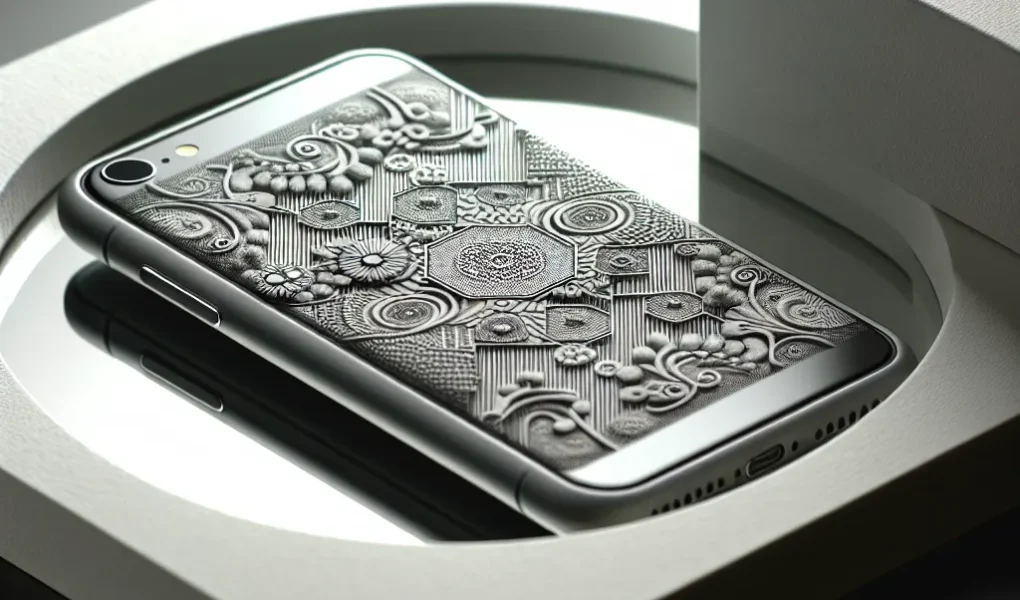Exploring the Impact of Textured Covers on User Interaction
Textured covers play a crucial role in enhancing the user experience of various products, especially in terms of user interaction. The impact of textured covers on user interaction has been a subject of considerable interest and research in recent years. These covers, often overlooked in their significance, can greatly influence how users engage with and perceive a product.
Exploring the impact of textured covers on user interaction reveals that the tactile sensation provided by textured surfaces can significantly improve the overall user experience. Studies have shown that incorporating textured covers on devices such as smartphones, tablets, and remote controls can lead to enhanced grip and maneuverability, ultimately resulting in a more satisfying interaction for the user.
Moreover, the incorporation of textured covers can also serve as a means of feedback for users, particularly in cases where touch or gesture-based interactions are involved. The texture can provide subtle cues and markers that assist users in navigating interfaces or utilizing controls more effectively, consequently reducing the likelihood of errors and enhancing overall usability.
Furthermore, from a design perspective, textured covers have the potential to evoke emotional responses from users, adding a dimension of personalization and aesthetic appeal to the product. The tactile qualities of these covers can elicit positive sentiments and create a more memorable and engaging user experience.
In conclusion, the impact of textured covers on user interaction is multifaceted, encompassing aspects of tactile feedback, usability, and emotional engagement. As designers and manufacturers continue to explore the potential of textured covers, they have the opportunity to significantly enhance the overall user experience across a wide range of products.
The Influence of Haptic Feedback in Textured Covers on User Experience
Textured covers play a crucial role in enhancing user experience, particularly through the influence of haptic feedback. Haptic feedback, the sense of touch or tactile feedback, has become increasingly important in the design of digital devices and interfaces. Textured covers utilize haptic feedback to provide users with a more engaging and immersive experience.
Research has shown that textured covers can significantly improve the user experience by providing tactile stimuli that complement visual and auditory cues. When users interact with a device or interface that incorporates textured covers, they are able to perceive a greater sense of tactility and precision, leading to enhanced usability and overall satisfaction.
Furthermore, the influence of haptic feedback in textured covers extends to emotional and psychological aspects of user experience. The tactile sensation provided by textured covers can evoke different emotions and responses, creating a more memorable and enjoyable interaction with the product.
In conclusion, the incorporation of textured covers with haptic feedback is a key factor in enhancing user experience. By leveraging tactile stimuli, textured covers contribute to improved usability, emotional engagement, and overall satisfaction, making them a valuable element in the design of digital devices and interfaces.
Tactile Interfaces: The Role of Textured Covers in Product Design
When it comes to product design, the tactile interface plays a crucial role in enhancing the overall user experience. Textured covers have emerged as a key element in creating a more engaging and efficient interaction between users and a variety of devices. The incorporation of textured covers in product design serves to not only improve the aesthetic appeal but also to provide functional benefits that can significantly elevate the user experience.
One of the primary advantages of textured covers is their ability to offer tactile feedback, allowing users to establish a sense of connection with the product. By incorporating varying textures, designers can cater to different sensory preferences and optimize the user experience for individuals with diverse tactile sensitivities. Whether it’s a smartphone, remote control, or kitchen appliance, the use of textured covers adds a new dimension to the interaction, making it more intuitive and enjoyable.
Furthermore, textured covers can enhance the grip and usability of devices, contributing to the overall ergonomics and practicality of the product. The incorporation of non-slip textures not only improves handling but also instills a sense of confidence and security in the user. This becomes especially relevant in devices that are frequently handled or used in various environmental conditions where maintaining a firm grip is essential.
From a design perspective, the strategic use of textured covers can also serve as a means of visual and tactile differentiation, adding depth and character to the product. By thoughtfully integrating textures that complement the product’s form and function, designers can create a more cohesive and appealing user interface. Whether it’s a subtle texture for elegance or a more pronounced one for a rugged aesthetic, the design possibilities are vast and can significantly contribute to the overall brand perception.
In conclusion, textured covers play a pivotal role in product design by enhancing the tactile interface and overall user experience. By leveraging the tactile sense, improving grip and usability, and adding a layer of visual and tactile distinction, textured covers have become indispensable in creating products that resonate with users on both a functional and emotional level.
Enhancing User Engagement Through Textured Cover Designs
Enhancing user engagement through textured cover designs has become an increasingly important aspect of product development in today’s competitive market. Textured covers offer a unique tactile experience that can significantly enhance the overall user experience. By incorporating different textures, such as embossed patterns or soft-touch finishes, companies can create products that not only look appealing but also feel great to touch.
Studies have shown that textured covers can evoke a sense of curiosity and interest in the user, prompting them to engage more with the product. Whether it’s a smartphone, tablet, or a book, the addition of textured covers can pique the user’s curiosity and encourage them to explore the product further. This increased interaction can lead to a deeper connection with the product and ultimately result in higher levels of user satisfaction and loyalty.
Furthermore, textured covers can also serve a functional purpose by improving grip and usability. Textures can provide a better grip, reducing the likelihood of accidental drops and making the product more user-friendly. This aspect is particularly important in the design of handheld devices where user comfort and ergonomics play a crucial role in the overall user experience.
In conclusion, the role of textured covers in enhancing user engagement is undeniable. Not only do they add a tactile dimension to the product, but they also stimulate curiosity, improve usability, and ultimately contribute to a more satisfying user experience. As companies continue to prioritize user-centered design, the incorporation of textured covers is expected to play a pivotal role in setting products apart in the market and creating meaningful connections with users.
The Importance of Texture: Enhancing User Experience with Textured Covers
When it comes to enhancing user experience, textured covers play a pivotal role in providing tactile feedback and improving overall usability. The importance of texture in design cannot be overstated, as it significantly impacts user interaction and perception. Textured covers not only add a layer of visual appeal to devices but also offer functional benefits that contribute to a more engaging user experience.
By incorporating textured covers, manufacturers can cater to the needs of users who prefer a more tactile feel when interacting with their devices. The sense of touch is a crucial aspect of human interaction, and textured covers provide a means to engage this sensory experience. Whether it’s a smartphone, tablet, or laptop, the addition of textured covers can create a more satisfying and comfortable interaction for users.
Furthermore, the use of textured covers can enhance the grip and ergonomics of devices, contributing to a more secure and reliable handling experience. This is particularly important for handheld devices that are prone to slipping or feeling cumbersome in the hand. The incorporation of strategic textures not only improves the physical feel of a device but also instills a sense of quality and attention to detail.
From a design perspective, textured covers offer a versatile way to incorporate visual and tactile diversity, adding depth and character to the overall aesthetic of a device. Whether it’s a subtle matte texture or a more pronounced pattern, the use of textured covers allows for creative expression while also serving a functional purpose.
In conclusion, the importance of texture in enhancing user experience with textured covers cannot be emphasized enough. By providing tactile feedback, improving grip, and adding visual interest, textured covers play a crucial role in elevating the overall usability and desirability of electronic devices.



